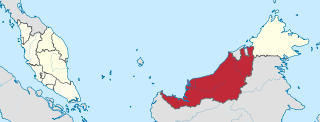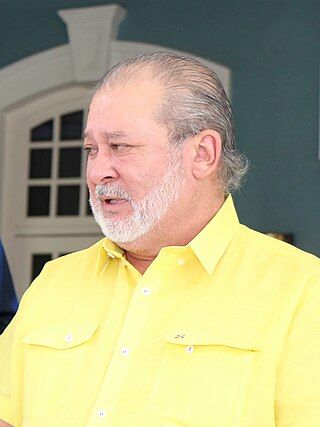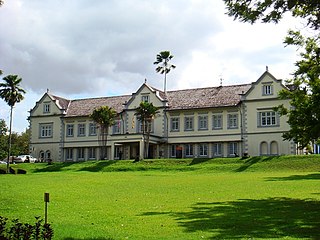
Sarawak is a state of Malaysia. The largest among the 13 states, with an area almost equal to that of Peninsular Malaysia, Sarawak is located in East Malaysia in northwest Borneo, and is bordered by the Malaysian state of Sabah to the northeast, Kalimantan to the south, and Brunei in the north. The state capital, Kuching, is the largest city in Sarawak, the economic centre of the state, and the seat of the Sarawak state government. Other cities and towns in Sarawak include Miri, Sibu, and Bintulu. As of the 2020 Malaysia census, the population of Sarawak was 2.453 million. Sarawak has an equatorial climate with tropical rainforests and abundant animal and plant species. It has several prominent cave systems at Gunung Mulu National Park. Rajang River is the longest river in Malaysia; Bakun Dam, one of the largest dams in Southeast Asia, is located on one of its tributaries, the Balui River. Mount Murud is the highest point in the state. Sarawak is the only state of Malaysia with a Christian majority.

Kuching, officially the City of Kuching, is the capital and the most populous city in the state of Sarawak in Malaysia. It is also the capital of Kuching Division. The city is on the Sarawak River at the southwest tip of Sarawak on the island of Borneo and covers an area of 431 km2 (166 sq mi) with a population about 165,642 in the Kuching North administrative region and 159,490 in the Kuching South administrative region—a total of 325,132 people.

Johor Bahru, colloquially referred to as JB, is the capital city of the state of Johor, Malaysia and the core city of Johor Bahru District, the second-largest district in the country, by population. It is the second-largest national GDP-contributor among the major cities in Malaysia, and forms a part of Iskandar Malaysia, the nation's largest special economic zone, by investment value. The city has a population of 858,118 people within an area of 391.25 km2.

Sultan Iskandar ibni Almarhum Sultan Ismail was Sultan of Johor, succeeding his father Sultan Ismail upon the latter's death in 1981. He reigned as the eighth Yang di-Pertuan Agong, the constitutional monarch of Malaysia, from 1984 to 1989. Sultan Iskandar's reign as Sultan of Johor lasted almost 29 years until his death in 2010.

Abdul Rahman bin Ya'kub was a Malaysian politician of Melanau descent from Mukah. He was the third Chief Minister of Sarawak and the fourth Yang di-Pertua Negeri Sarawak. He is also an uncle of Pehin Sri Abdul Taib Mahmud, since his (Taib's) mother Hajah Hamidah Ya'akub (1916–2006) was his (Rahman's) eldest-born sibling.

Kota Samarahan, formerly known as Muara Tuang, is a town and the administrative seat of the Samarahan District in Samarahan Division, Sarawak, Malaysia. It is also a satellite town for Kuching due to its proximity to the city part of Greater Kuching area. The Sarawak government position Kota Samarahan as the medical and education hub of the state. Kota Samarahan can be considered as the 'heart' of Malay/Muslims in Sarawak which forms approximately over 56% of the population, thus make it as another "Putrajaya" version of Sarawak.

Kuching Division is one of the twelve administrative divisions in Sarawak, Malaysia. Formerly part of what was called the "First Division", it is the center and the starting point of modern Sarawak. Kuching Division has a total area of 4,559.5 square kilometres.

This article lists important figures and events in Malaysian public affairs during the year 2005, together with births and deaths of notable Malaysians.
This article lists important figures and events in Malaysian public affairs during the year 1989, together with births and deaths of notable Malaysians.

This article lists important figures and events in Malaysian public affairs during the year 1996, together with births and deaths of notable Malaysians.

Ibrahim ibni Iskandar is King of Malaysia and the fifth Sultan of modern Johor.

The Sarawak State Museum is the oldest museum in Borneo. It was founded in 1888 and opened in 1891 in a purpose-built building in Kuching, Sarawak.

The National Planetarium is the national planetarium of Malaysia. It is a blue-domed structure that is situated on top of a hill in the Lake Gardens at Jalan Perdana, Kuala Lumpur. It is about 120,000 square feet (11,000 m2) in area.

B. M. Birla Planetarium is a large planetarium in Chennai, India. The fifth B. M. Birla planetarium in the country, it is located at Kotturpuram in the Periyar Science and Technology Centre campus which houses eight galleries, namely, Physical Science, Electronics and Communication, Energy, Life Science, Innovation, Transport, International Dolls and Children and Materials Science, with over 500 exhibits. Built in 1988 in the memory of the great industrialist and visionary of India B. M. Birla, it is considered the most modern planetarium in India, providing a virtual tour of the night sky and holding cosmic shows on a specially perforated hemispherical aluminium inner dome. Other Birla planetariums in India include the M. P. Birla Planetarium in Kolkata, the Birla Planetarium in Hyderabad, and the planetariums in Tiruchirapalli and Coimbatore.

Ibrahim Sultan Polytechnic is a polytechnics in Pasir Gudang, Johor, Malaysia.

The Islamic Heritage Museum is a museum in Kuching, Sarawak, Malaysia. It is part of the Kuching Heritage Trail.
Culture of Sarawak exhibits notable diversity in ethnicity, cuisine, and language. The Sarawakian culture has been influenced by Bruneian Malays of the coastal areas. Substantial cultural influences also came from the Chinese and British cultures.

The Sultanate of Sarawak was a Malay kingdom, located in present-day Kuching Division, Sarawak. The kingdom was founded in 1599, after the conquest of the preceding Santubong Kingdom and the later Sultanate of Brunei.

The economy of Sarawak is the fourth-largest of the states of Malaysia, making up 9.3% of the Malaysian gross domestic product (GDP) in 2022. Meanwhile, Sarawak is home to 7.9% of the Malaysian population based on the 2020 census.


















